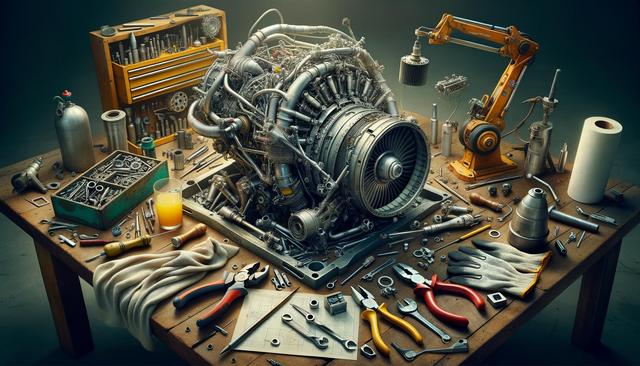The Role of Aviation Mechanics in the Industry
Aviation mechanics play an essential role in ensuring the safety and efficiency of air travel. These professionals are responsible for inspecting, maintaining, and repairing aircraft to meet strict aviation standards. Their work affects everything from commercial airliners to private jets and cargo planes. The need for highly trained professionals in this field continues to grow as air travel increases and aircraft systems become more complex. As a result, the aviation training industry has placed a strong emphasis on developing comprehensive aircraft maintenance training programs that align with regulatory expectations and modern technology.
Companies supporting aircraft maintenance and repair often partner with educational institutions and certification bodies to ensure their technicians receive up-to-date training. These partnerships help ensure that aviation training requirements are met, including hands-on experience and knowledge of aviation safety training in the United States. Aviation mechanics must stay current with the latest technologies and safety updates, making ongoing education a critical part of the profession.
Understanding Aircraft Maintenance Training
Aircraft maintenance training is a structured process that equips future aviation mechanics with the skills and knowledge required for the job. These training programs are designed to cover various systems within an aircraft, including engines, hydraulics, electrical systems, and avionics. The curriculum often includes both theoretical coursework and practical training in real-world settings. Many aviation training programs are certified by national aviation authorities, ensuring they align with industry regulations and safety protocols.
Key components of aircraft maintenance training typically include:
- Basic aerodynamics and aircraft structures
- Maintenance procedures and safety standards
- Regulatory compliance and documentation
- Hands-on mechanical and electrical system training
Participants in these programs may pursue different certifications depending on their specialization, such as airframe or powerplant licenses. These certifications are not only valuable but often required by employers in the aviation training industry. Additionally, aviation safety training in the United States is an integral part of the curriculum, reinforcing the importance of strict adherence to safety procedures.
Meeting Aviation Training Requirements
Aviation training requirements vary depending on the country and type of certification sought, but they generally share a common goal: to produce competent, safety-focused aviation personnel. In the United States, the Federal Aviation Administration (FAA) sets specific guidelines for training programs, including the number of instructional hours, subject matter, and evaluation methods. Meeting these requirements is essential for both training institutions and students aiming to enter the field of aviation mechanics.
To successfully complete aviation training programs, students typically need to:
- Pass written and practical exams
- Complete a set number of supervised maintenance hours
- Stay updated on continuing education requirements
These standards ensure that graduates are prepared for aviation training jobs and understand their responsibilities in maintaining aviation safety. For companies that support aircraft maintenance and repair, hiring individuals who have met these rigorous requirements helps ensure compliance, reduce risks, and uphold operational standards.
Companies Supporting Aircraft Maintenance and Repair
Organizations that offer aircraft maintenance and repair services are critical partners in maintaining the integrity of the aviation sector. These companies range from independent maintenance providers to large-scale operations supporting entire fleets. They work closely with airlines, cargo carriers, and government agencies to keep aircraft in airworthy condition. Their role not only includes repair work but also preventive maintenance, inspections, and upgrades to meet evolving safety regulations.
To support these operations effectively, many companies invest in in-house training and collaborate with aviation training programs to ensure a steady pipeline of skilled professionals. They may also provide opportunities for apprenticeships or internships for individuals enrolled in aircraft maintenance training courses. This real-world experience is invaluable for newcomers and contributes to building a highly competent workforce that meets aviation training requirements and safety expectations.
These companies also contribute to the advancement of aviation safety training in the United States by adopting new technologies, adhering to best practices, and sharing knowledge across the industry. As a result, they play a key role in maintaining the high safety standards expected in global aviation operations.
Career Outlook and Opportunities in Aviation Mechanics
The demand for aviation mechanics continues to grow, fueled by an expanding global fleet and retiring workforce. This creates a favorable environment for individuals interested in entering the field through aviation training jobs. Many graduates of aircraft maintenance training programs find employment with airlines, maintenance providers, or aerospace manufacturers. The work is hands-on, detail-oriented, and crucial to the safety of flight operations.
Aviation training programs do more than teach technical skills—they also instill a culture of safety and precision. For those looking to advance in their careers, continuing education and certifications are key. Some mechanics choose to specialize in avionics, turbine engines, or specific aircraft models, which can open up additional professional pathways within the aviation training industry.
Key benefits of a career in aviation mechanics include:
- Job stability due to consistent demand
- Opportunities for advancement and specialization
- Engaging, hands-on work environment
- Contribution to aviation safety and reliability
With solid aviation training requirements and access to structured learning paths, individuals entering this field can build meaningful careers that support the broader goals of the aviation sector, especially in maintaining safety and operational readiness.
Conclusion: Building a Skilled Workforce for Aviation Safety
As aviation technology evolves and flight activity increases, the role of aviation mechanics becomes even more critical. Through robust aircraft maintenance training and adherence to aviation training requirements, professionals in this field help ensure the continued safety and reliability of air travel. Companies supporting aircraft maintenance and repair rely on well-trained personnel to uphold industry standards and meet regulatory demands. Aviation training programs, particularly those that emphasize aviation safety training in the United States, are central to developing this skilled workforce. Whether you’re considering a career in aviation or looking to expand your qualifications, the aviation training industry offers structured, respected paths to long-term success in a vital and growing sector.




Leave a Reply